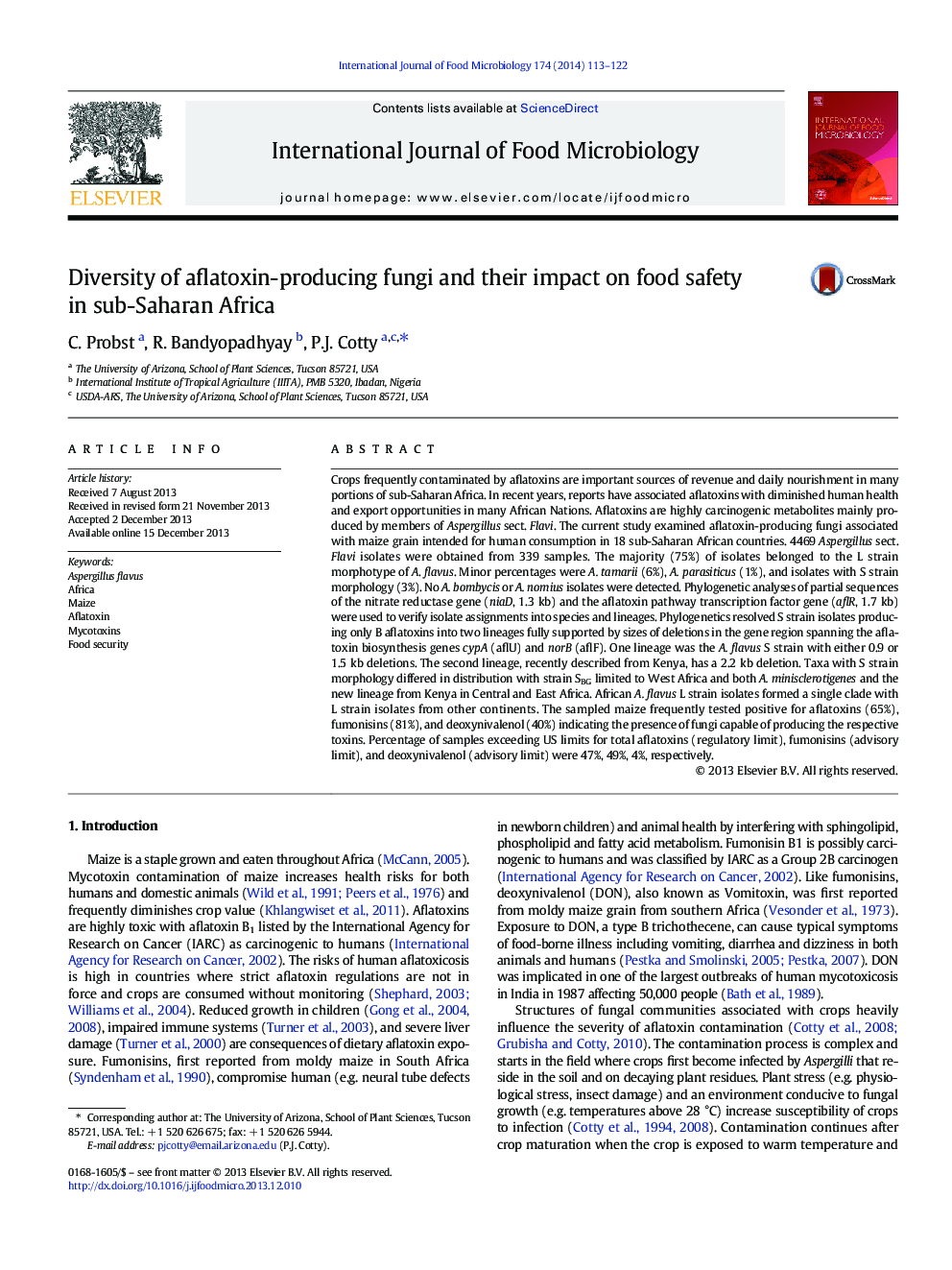| کد مقاله | کد نشریه | سال انتشار | مقاله انگلیسی | نسخه تمام متن |
|---|---|---|---|---|
| 4366957 | 1616608 | 2014 | 10 صفحه PDF | دانلود رایگان |
• Aflatoxins and/or fumonisins were found in most locally grown maize in 18 African nations during 2007 and 2008.
• Dietary human exposure to mycotoxins is high in all 18 nations.
• Phylogenetic data indicates presence of at least 6 previously reported aflatoxin-producing taxa.
• The aflatoxin-producing taxa differed among regions.
• Aflatoxin producing taxa with S strain morphology detected in West Africa were not detected in East Africa and those in East Africa were not found in West Africa.
Crops frequently contaminated by aflatoxins are important sources of revenue and daily nourishment in many portions of sub-Saharan Africa. In recent years, reports have associated aflatoxins with diminished human health and export opportunities in many African Nations. Aflatoxins are highly carcinogenic metabolites mainly produced by members of Aspergillus sect. Flavi. The current study examined aflatoxin-producing fungi associated with maize grain intended for human consumption in 18 sub-Saharan African countries. 4469 Aspergillus sect. Flavi isolates were obtained from 339 samples. The majority (75%) of isolates belonged to the L strain morphotype of A. flavus. Minor percentages were A. tamarii (6%), A. parasiticus (1%), and isolates with S strain morphology (3%). No A. bombycis or A. nomius isolates were detected. Phylogenetic analyses of partial sequences of the nitrate reductase gene (niaD, 1.3 kb) and the aflatoxin pathway transcription factor gene (aflR, 1.7 kb) were used to verify isolate assignments into species and lineages. Phylogenetics resolved S strain isolates producing only B aflatoxins into two lineages fully supported by sizes of deletions in the gene region spanning the aflatoxin biosynthesis genes cypA (aflU) and norB (aflF). One lineage was the A. flavus S strain with either 0.9 or 1.5 kb deletions. The second lineage, recently described from Kenya, has a 2.2 kb deletion. Taxa with S strain morphology differed in distribution with strain SBG limited to West Africa and both A. minisclerotigenes and the new lineage from Kenya in Central and East Africa. African A. flavus L strain isolates formed a single clade with L strain isolates from other continents. The sampled maize frequently tested positive for aflatoxins (65%), fumonisins (81%), and deoxynivalenol (40%) indicating the presence of fungi capable of producing the respective toxins. Percentage of samples exceeding US limits for total aflatoxins (regulatory limit), fumonisins (advisory limit), and deoxynivalenol (advisory limit) were 47%, 49%, 4%, respectively.
Journal: International Journal of Food Microbiology - Volume 174, 17 March 2014, Pages 113–122
